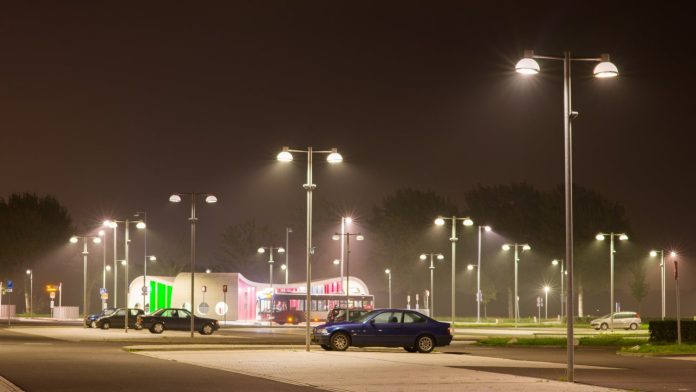Manchester city council in the UK has deployed a new smart city lighting system as part of its continuing CityVerve project, led by Cisco. The new lighting system can be fitted retroactively to existing infrastructure. Cisco has managed the installation with the council, in conjunction with manufacturer Holophane and software provider Tvilight.
“This form of smart lighting is unlike any other that has previously been deployed, since it can be fitted retroactively. This means that it can be deployed in areas that have already been built,” explained Vicki de Blasi, communications lead at CityVerve, in a blog post.
The local authority has selected LED bulbs from Holophane for the new lighting system, deployed in the city’s central science park, run by Manchester Science Partnerships (MSP), the UK’s largest science park operator with five sites in north of the country. The Holophane ‘V-Max’ lights are fitted with “tin can” communication nodes and motion-sensing streetlight controllers from Tvilight.
De Blasi explained: “You don’t have to start from scratch to include the V-Max; you can add it to pre-existing urban landscapes. This means it’s possible to implement smart lighting across city streets that have been around for years, which is a far more cost-effective means for delivering smart lighting at scale.”
The sensors in the Tvilight controllers split the area around them into four ‘cones’, rather than just one, and identify motion in each one, and increase the brightness of the light accordingly. This generates a “bubble of light” effect, according to de Blasi, where lights are turned up in time with a person’s progress along their route.
The sensor in the smart city lighting also features ‘motion compensation’ to filter interferences, so they are not triggered by wind, tree branches or animals. The Tvilight software can also be used to identify heat maps where lighting is particularly important or heavily used. Local councils and entrepreneurs can use this data to design new initiatives to improve city lighting and energy usage.
“There are many benefits to implementing smart lighting solutions. The cost savings are obvious. By reducing the amount of time the lights are on at full beam, you can save vast amounts of money. This financial saving is accompanied by serious energy-savings. Less electricity is required to power dimmed lights; equally, this protects local residents from high levels of light pollution.
“And these savings are balanced with the social aspect of city lighting. People still feel safe to walk about at night – in fact, they can have a much more pleasant experience when they do, since the bubble of light won’t disorientate them by flashing between darkness and light.”
Cisco is providing the central platform for the CityVerve project, designed to absorb data from all corners of the city across all manner of wireless protocols. CityVerve taps into both new and existing data-sets. Public and private partners can simply plug their infrastructure into the Cisco platform.
Its wizardry is to map every network asset in the city in a common geo-spatial language in order to create the illusion they are part of a unified smart city network. “It allows multiple networks and multiple technologies to behave like they are part of the same thing,” says Nick Chrissos, head of innovation technology for Cisco in the UK and Ireland, told Enterprise IoT Insights late last year.
Cisco has worked with the council to define 120 uses cases of connected city services as part of the CityVerve trial. “These are things that are connected together that no other smart city has yet connected together,” said Chrissos.
For CityVerve, the definition of success – as defined by Innovate UK and Cisco, its sponsor and architect, respectively – is to build a platform that is scalable and procurable, and not merely experimental. The deadline for success is looming.
“There is a big work-back inside the project, which the city leads, which is about how it expands. Come June 31, 2018, everything will shut down if the city doesn’t have a plan about how to move it forward. It has to be converted from an experiment funded by government and partners to a commercial engagement. We have focused from beginning to make sure this becomes reality,” said Chrissos.
Frost & Sullivan said this week the value of the smart cities market will pass $2 trillion by 2025 as artificial intelligence (AI) technologies become standardised in city functions and the final hurdle of inter-departmental integration is finally overcome.
In a separate report, Navigant Research has calculated there are now 355 smart city projects in 221 cities, of which almost one in five now cut across multiple industry sectors, as claimed in the CityVerve project. The total value of the smart cities market will more than double in the next decade, from $40.1 billion in 2017 to 94.2 billion by the end of 2026, reckons Navigant.

